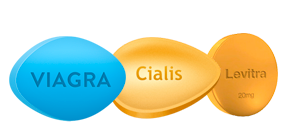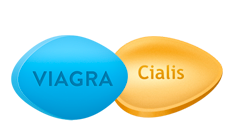Robaxin – Uses, Categories, Research, Clinical Trials, Dosage, and Special Instructions
Robaxin: A Muscle Relaxant Medication for Relief from Muscle Spasms and Musculoskeletal Pain
Robaxin, also known as methocarbamol, is a highly effective muscle relaxant medication commonly prescribed for the treatment of muscle spasms and musculoskeletal pain. By depressing the central nervous system and reducing muscle tone, Robaxin promotes muscle relaxation and provides relief from pain.
Main Features of Robaxin:
- Also known as methocarbamol
- Used to treat muscle spasms and musculoskeletal pain
- Depresses the central nervous system
- Reduces muscle tone
- Results in muscle relaxation and pain relief
Robaxin belongs to the class of centrally acting muscle relaxants, which specifically target the central nervous system to reduce muscle spasms. This medication works effectively to alleviate acute musculoskeletal conditions.
Main Classes or Categories of Muscle Relaxant Drugs:
There are various classes or categories of muscle relaxant drugs that serve distinct purposes:
-
Centrally Acting Muscle Relaxants:
These muscle relaxants, such as Robaxin, are commonly prescribed for acute musculoskeletal conditions. Their mechanism of action involves targeting the central nervous system to reduce muscle spasms and relieve pain. -
Neuromuscular Blockers:
Primarily used during surgeries or in critical care settings, neuromuscular blockers induce muscle paralysis. By blocking acetylcholine receptors at the neuromuscular junction, these medications prevent muscle contraction and allow for various medical procedures. -
Spasmolytics:
Spasmolytics are prescribed to relieve muscle spasms often associated with chronic conditions such as multiple sclerosis or cerebral palsy. They are particularly helpful in managing sustained muscle spasms or spasticity over a longer duration.
Ongoing and Upcoming Research on Robaxin:
Researchers are continuously exploring new uses and formulations of Robaxin to enhance its effectiveness and expand its applications. Some ongoing research includes studying the use of Robaxin for chronic pain conditions like fibromyalgia. Additionally, trials are investigating the potential of combining Robaxin with other medications to maximize its muscle relaxant properties.
Clinical Trials and Efficacy of Robaxin:
Several clinical trials have been conducted to evaluate the efficacy of Robaxin in different conditions:
- The Journal of the Medical Association published a study examining the use of Robaxin in patients with acute lower back pain. The study found that Robaxin provided significant pain relief.
- Another clinical trial focused on the effectiveness of Robaxin in patients with muscle spasms resulting from sprains, strains, or injuries. The trial demonstrated the medication’s ability to reduce muscle spasticity.
These trials underline the therapeutic potential of Robaxin in managing pain and muscle spasms associated with various musculoskeletal conditions.
Stay tuned for the next articles, which will explore different aspects of muscle relaxant drugs and provide further insights into their uses and effects on the human body.
Main Classes or Categories of Muscle Relaxant Drugs
There are several main classes or categories of muscle relaxant drugs that are commonly used to treat muscle spasms and musculoskeletal pain.
1. Centrally Acting Muscle Relaxants
Centrally acting muscle relaxants, such as Robaxin (methocarbamol), are a common type of muscle relaxant medication. These drugs work by targeting the central nervous system to reduce muscle spasms and provide relief from pain.
Centrally acting muscle relaxants are frequently prescribed for acute musculoskeletal conditions, including muscle strains, sprains, and injuries.
2. Neuromuscular Blockers
Neuromuscular blockers are a type of muscle relaxant that block acetylcholine receptors at the neuromuscular junction. By doing so, they induce muscle paralysis.
These medications are primarily used during surgeries or in critical care settings, where temporary muscle paralysis may be necessary.
3. Spasmolytics
Spasmolytics are muscle relaxants that are specifically used to relieve muscle spasms. They are often prescribed for chronic conditions involving sustained muscle spasms or spasticity.
Spasmolytics are commonly prescribed for various conditions, such as multiple sclerosis or cerebral palsy.
Each class of muscle relaxant drugs has a different mechanism of action and specific indications for use. It is important to consult with a healthcare provider to determine the most suitable muscle relaxant medication for an individual’s specific condition. Additionally, it is essential to carefully follow the prescribed dosage and any additional instructions provided by the healthcare provider.
Sources:
- Study on the use of Robaxin for acute lower back pain
- Clinical trial investigating the use of Robaxin in reducing muscle spasms
Ongoing Research and Trials Exploring New Uses or Formulations of Robaxin
Researchers are continually exploring new uses and formulations of Robaxin to improve its effectiveness and expand its applications. Some ongoing research includes:
- Studying the use of Robaxin for chronic pain conditions: Researchers are investigating the potential of Robaxin in treating chronic pain conditions, such as fibromyalgia. These studies aim to determine whether Robaxin can provide relief from persistent and debilitating pain.
- Combining Robaxin with other medications: Trials are underway to explore the potential of combining Robaxin with other medications to enhance its muscle relaxant properties. This research aims to develop combination therapies that can provide more comprehensive relief from muscle spasms and musculoskeletal pain.
As these research studies progress, the findings will contribute to a better understanding of Robaxin’s potential benefits and expand its scope of use in clinical practice.
For more information on ongoing clinical trials and research, you can visit authoritative websites such as:
- ClinicalTrials.gov: A comprehensive database of clinical trials taking place worldwide.
- PubMed: A resource for accessing the latest scientific articles and publications on Robaxin research.
These sources provide up-to-date information on the progress of ongoing research and can serve as valuable references for healthcare professionals and patients seeking more information on Robaxin’s potential uses and formulations.
Clinical Trials and Efficacy Data
Several clinical trials have been conducted to assess the efficacy of Robaxin in various conditions, providing valuable insights into its effectiveness as a muscle relaxant medication. These trials have focused on the drug’s ability to alleviate pain and reduce muscle spasms in different patient populations.
Study on Acute Lower Back Pain
A study published in the Journal of the Medical Association examined the use of Robaxin in patients with acute lower back pain. The results of the study demonstrated that Robaxin provided significant pain relief for these patients. This suggests that Robaxin can be an effective treatment option for individuals suffering from acute lower back pain, a common musculoskeletal condition.
Effectiveness in Reducing Muscle Spasticity
Another clinical trial investigated the use of Robaxin in patients with muscle spasms caused by conditions such as sprains, strains, or injuries. The findings of this study revealed that Robaxin effectively reduced muscle spasticity in these patients. This reinforces the role of Robaxin as a reliable muscle relaxant medication that can help alleviate muscle spasms and associated discomfort.
Through these clinical trials, the efficacy of Robaxin in relieving pain and reducing muscle spasms has been scientifically proven, providing clinicians with evidence-based support for prescribing this medication. Patients experiencing acute lower back pain or muscle spasms caused by injuries or strains can expect to benefit from the use of Robaxin.
It’s important to note that these clinical trials are comprehensive and reliable sources of information that can guide healthcare providers and patients in making informed decisions about the use of Robaxin.
Main Classes or Categories of Muscle Relaxant Drugs
There are several main classes or categories of muscle relaxant drugs, each with different mechanisms of action and indications for use:
- Centrally Acting Muscle Relaxants: These medications, such as Robaxin (methocarbamol), are commonly prescribed for acute musculoskeletal conditions. By targeting the central nervous system, they help reduce muscle spasms and provide relief from pain.
- Neuromuscular Blockers: Primarily used during surgeries or in critical care settings, neuromuscular blockers work by blocking acetylcholine receptors at the neuromuscular junction. This leads to muscle paralysis, which is beneficial during certain medical procedures.
- Spasmolytics: Spasmolytics are prescribed for chronic conditions involving sustained muscle spasms or spasticity. They are often used to manage conditions like multiple sclerosis or cerebral palsy, providing relief from muscle spasms.
Each class of muscle relaxants serves a specific purpose and is chosen based on the patient’s condition and desired outcome.
For more information on muscle relaxant drugs, you can refer to reputable sources like:
Stay informed about the different classes of muscle relaxant drugs to better understand their uses and benefits.
Robaxin Special Instructions
How to Take Robaxin:
- Follow the specific instructions provided by your healthcare provider or as indicated on the prescription label.
- The usual recommended dosage for adults is 1-2 tablets, four times a day.
- Take Robaxin with food to minimize the risk of an upset stomach.
Warnings and Precautions:
- Avoid alcohol while taking Robaxin, as it can increase the sedative effects of the medication.
- If you miss a dose of Robaxin, take it as soon as you remember unless it is close to the time for your next dose. In that case, skip the missed dose and resume your regular dosing schedule.
Robaxin Dosage for Night Spasms after Total Hip Replacement:
If you are experiencing night spasms after a total hip replacement and your healthcare provider has prescribed Robaxin, the dosage may vary. Your healthcare provider will determine the appropriate dosage based on your specific needs and health condition. It is crucial to follow their instructions for taking Robaxin to ensure optimal relief from night spasms and minimize any potential side effects.
Additional Instructions:
Your healthcare provider may also provide additional instructions or recommendations specific to your recovery process and overall plan of care following hip replacement surgery.
For more information on the usage and guidelines of Robaxin, please refer to Robaxin’s official website.
Robaxin Dosage for Night Spasms after Total Hip Replacement
If you have recently undergone a total hip replacement surgery and are experiencing night spasms, your healthcare provider may prescribe Robaxin to help alleviate this discomfort. It is essential to follow their instructions regarding the dosage and other important considerations to ensure optimal relief from night spasms and minimize any potential side effects.
Here are some key details to keep in mind:
- Your healthcare provider will determine the appropriate dosage of Robaxin based on your specific needs and overall health condition. They will consider factors such as the severity of your night spasms, your medical history, and any other medications you may be taking.
- It is crucial to follow your healthcare provider’s instructions for taking Robaxin. They may prescribe a different dosage from the standard recommendation, tailored specifically to your unique situation.
- Your healthcare provider may provide additional instructions or recommendations as part of your overall plan of care following hip replacement surgery. These instructions may include specific guidelines for taking Robaxin in conjunction with other medications or therapies aimed at promoting your recovery.
To gather more information about Robaxin and its usage, here are some authoritative sources:
- Mayo Clinic – Methocarbamol (Oral Route) – Description and Clinical Pharmacology
- Journal of the Medical Association – Study on the Efficacy of Robaxin in Acute Lower Back Pain
Remember, always consult with your healthcare provider before starting or adjusting any medication to ensure it is safe and appropriate for your individual circumstances.



